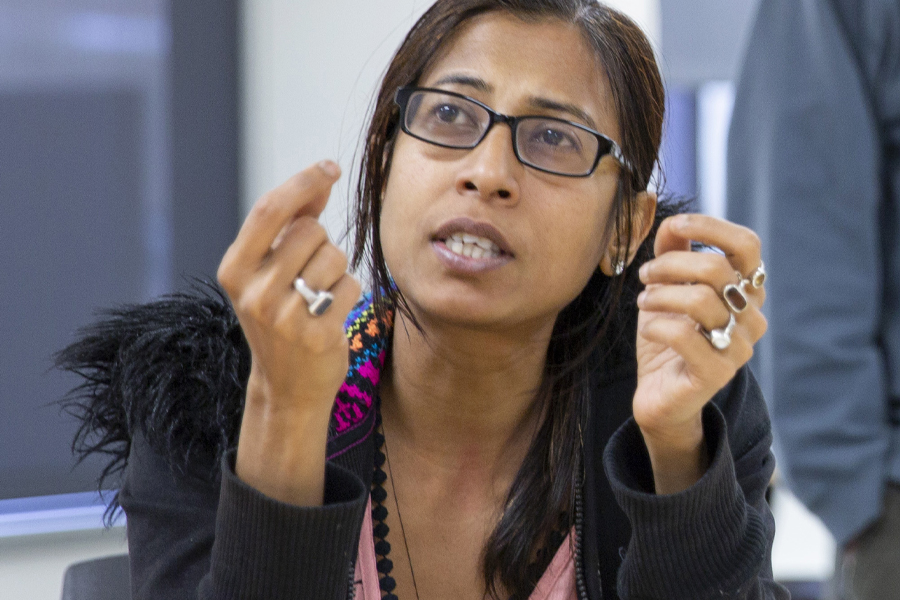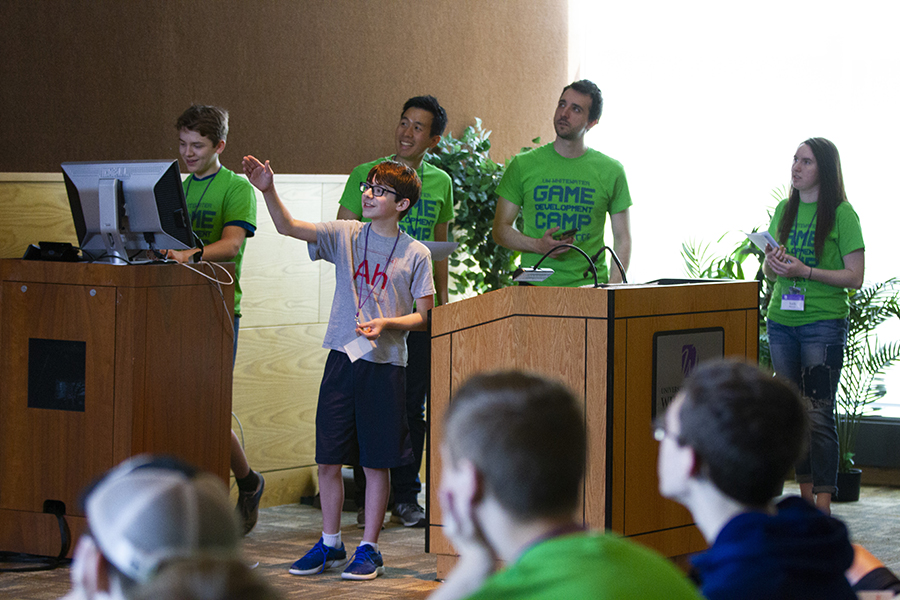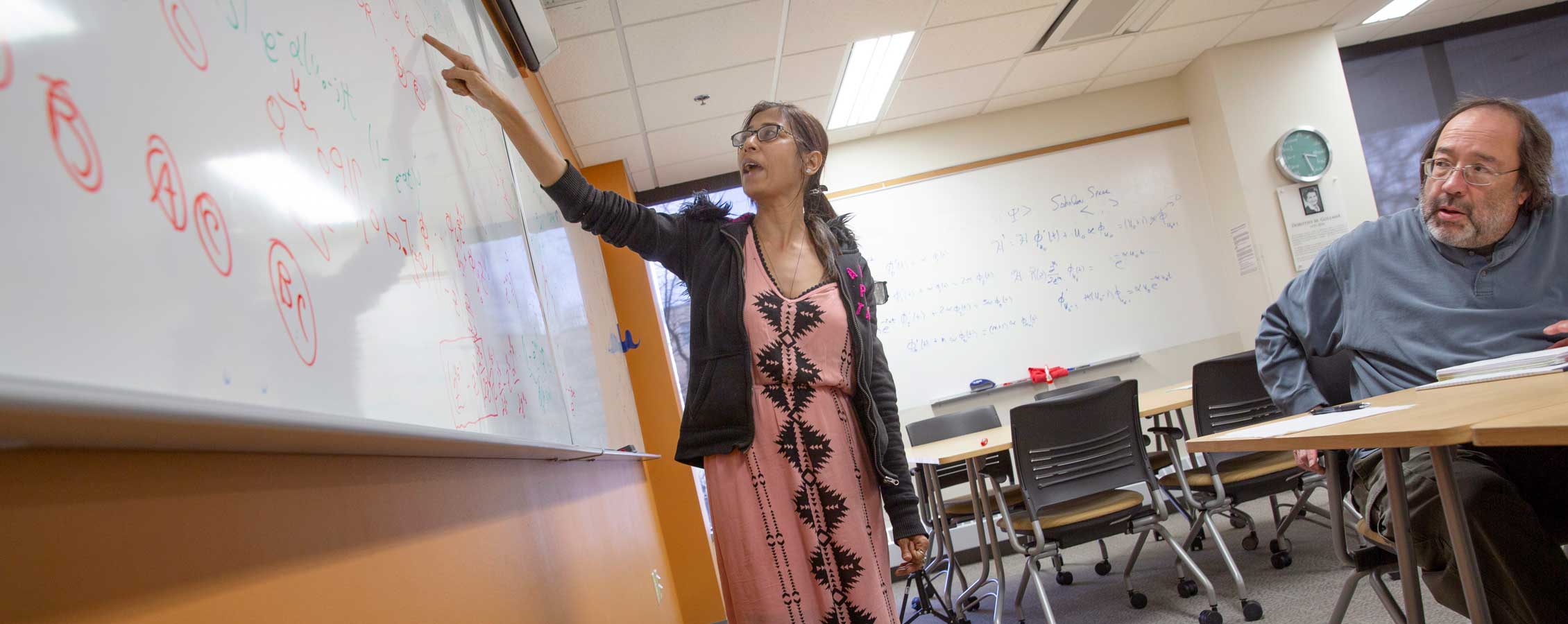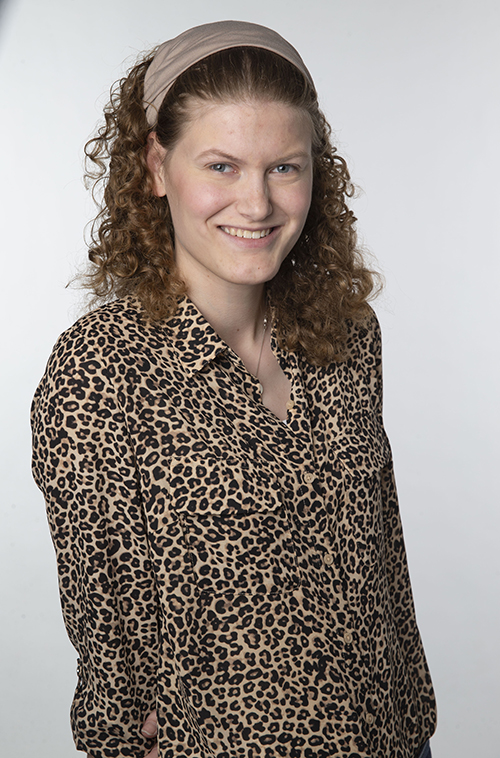Applied mathematics research spurs UW-Whitewater students to be published
April 26, 2021
Written and photos by Craig Schreiner
Two University of Wisconsin-Whitewater students in Aditi Ghosh’s applied mathematics class, where undergraduates are learning graduate-level research skills, are co-authors on a project that has been published by the interdisciplinary research journal PLOS One.
The study, “The Role of Oxygen Intake and Liver Enzyme on The Dynamics of Damaged Hepatocytes: Implications to Ischaemic Liver Injury via a Mathematical Model,” seeks to identify biomarkers of a potentially lethal liver condition.
Ghosh, an assistant professor, is publishing jointly with Claire Onsager, a mathematics major from Stoughton, and Andrew Mason, a media arts and game development major from Deerfield, who worked together to mathematically model data on the diagnosis of hypoxic liver injury, an oxygen deprivation condition, in Ghosh’s class in 2019.
“It’s not a typical math class,” said Ghosh, who has taught at UW-Whitewater since 2017. “It is a different (kind of) class where we are giving you a different experience and knowledge.”

As a child growing up in India, Ghosh, pictured, remembers being curious about the world and being good at math — she jokes that she specializes in math because it was the only subject she did well in. As she continued to explore academics, she found a way to apply mathematics to her innate curiosity by modeling data to predict the courses of unsolved problems in medicine, politics, the environment and other disciplines.
When Ghosh began working at UW-Whitewater, an applied mathematics course was on her list of teaching assignments. In planning that course, she decided she would create small research teams of students who would do applied mathematics on real-world problems where each person could contribute at least one skill — computation, programming, analysis, communication and so on.
In lieu of chapter tests, the teams would dive into long-form research projects and present their progress every two weeks. Team members would also need to share enough genuine interest in their topic to stay with it through the semester.
“I wanted my students to do open projects,” said Ghosh. “For example whatever interests them or something relevant I have in my mind — current affairs or something that is going on, and so I started with that.”
Ghosh knew she was onto something when, during her first year on campus, one of her teams won the top prize at the biannual Undergraduate Research Day with a project on ecology.
“When you are presenting to me biweekly, you are gaining communication skills,” she said. “Some people hesitate. Some students are shy. But these are the skills you need when you go for a job. You have to present yourself and show them the skills you know.”
The following year, Onsager and Mason were among her students. Before coming to UW-Whitewater, Ghosh worked on a project modeling alcohol abuse and acetaminophen overdose related to liver damage. As her second class of students was beginning, a related topic caught Ghosh’s attention. It was hypoxic liver injury, a subject with new ground to be broken by applied mathematics modeling.
“This was a small class, only six or seven students,” she said. “One of the teams wanted to work on liver injury, and I said ‘why don’t you work on this particular injury?’ because one of my collaborators had suggested that it still doesn’t get detected well.”
The students dug in, assembling data on hypoxic liver injury. The students’ work drew Ghosh in.
“Within one and a half months, we made a model,” she said. “Once I saw the model and I saw the type of predictions, I got really interested in it. I had not seen any mathematical model of this liver injury. I thought, ‘Why don’t we pursue it and see what happens?’”
Weeks later, as the semester was ending, Ghosh thought the project was too important to close down. She felt the work contained valuable insights into an area of medicine where mathematical modeling was scarce.
“You can’t finish a research paper in a semester,” said Ghosh. Although Onsager was graduating, she volunteered to work with Ghosh through the summer, and they were able to test, verify and validate the model until they had a publishable product.
Onsager, pictured, went on to Northwestern University, where she is in her second year in a Ph.D. program in electrical engineering. She hopes to work in research and development in a national laboratory.
“The project with Dr. Ghosh helped to strengthen my research skills in preparation for graduate school,” she said. “The mathematical model we developed has the potential to aid in the treatment of patients with serious liver damage, and I wanted to do what I could to help share our results.”
For Mason, who graduated in December 2020, the mathematical modeling skills will be useful for game development. And he grew from the rigor of applying his mathematical knowledge to a research — not a textbook — problem.
“We needed to justify to ourselves and to others why we did everything we did,” said Mason. “It was one of my most valuable experiences at university.”

Andrew Mason, second from right, was among those staffing an electronic game development camp at UW-Whitewater in June 2019. Pictured from left are Gaven Schultz, 13, front, and his brother Quentin, 15, demonstrating the game they have created, Assistant Professor Nick Hwang, Mason, and media arts and game development student Leah Blasczyk, who also staffed the camp.
Ghosh adds, “They enhance their problem-solving skills in practical problems. It’s not a book problem. Applying math in real life — that’s what this class does.”
“I have seen many students improve over time, and it has instilled in them that they can speak out,” she said, her voice rising to drive home the point. “They can speak out for something they know.”


